 ,
OpenStreetMap
,
OpenStreetMap 

 ,
OpenStreetMap
,
OpenStreetMap 

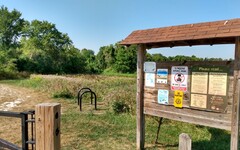
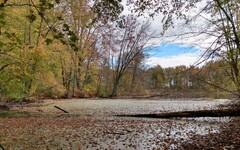
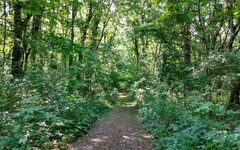
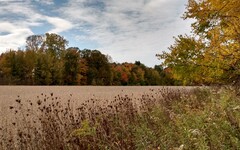
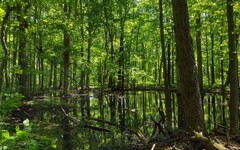
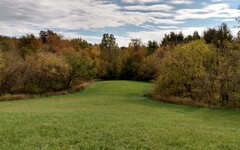

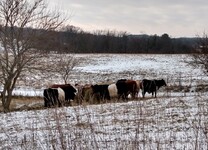
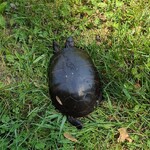
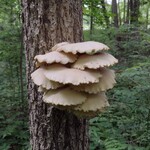
Comments: If you are looking to get away from noise and crowds, the Brauer Preserve is a great choice. Situated about 4 miles from the nearest highway, and 7+ miles from any significant population base (roughly equidistant from Ann Arbor, Saline, Chelsea, and Manchester), the only sounds of human activity you are likely to hear (if any) will be from the adjacent farms.
There is also limited farming activity inside the preserve,
and a few of the trail segments skirt along
a boundary separating crops and woods.
The loop in the northwest corner (marked in green on the trail map)
seems to require a fair amount of imagination -- there does not
seem to be any physical trail. This
view from the hilltop  looking southeast toward where the trail emerges from the woods shows
that what you do have is an open, grassy field. Presumably one is
expected to traverse the perimeter. Along the way you may spot
cows or sheep on the adjacent farms.
looking southeast toward where the trail emerges from the woods shows
that what you do have is an open, grassy field. Presumably one is
expected to traverse the perimeter. Along the way you may spot
cows or sheep on the adjacent farms.
A grand tour of the preserve using the outermost trail segments is about 2.3 miles long.
No dogs, bikes, or hunting allowed.
Directions: From the west side of Ann Arbor, it is simplest to head west on Scio-Church for about 7 miles and turn left (south) onto Parker Road. The small parking lot and trailhead is on the right (west) side of Parker, about 500 feet south of Waters Road.
From farther away, you may prefer to use I-94. In that case, take the Baker Road exit, turn left (south) onto Baker, right (west) onto Jackson Road, then left (south) onto Parker.
Excerpt from the website: Upland habitat communities [in the Brauer Preserve] include dry-mesic forest and dry Southern forest; wetland community types include Southern swamp, marsh, and open water. In particular the swamp around the lake has many mature trees and an impressive fern community. The preserve also includes approximately 85 acres that were farmed prior to the County acquiring the property. With assistance from the Natural Resources Conservation Service and the Washtenaw County Conservation District, WCPARC developed a conservation management plans to include the continuation of farming on the land. Conservation farming practices include crop rotation, establishment of field borders and buffer strips to protect waterways, and minimum use of fertilizer and pesticides.